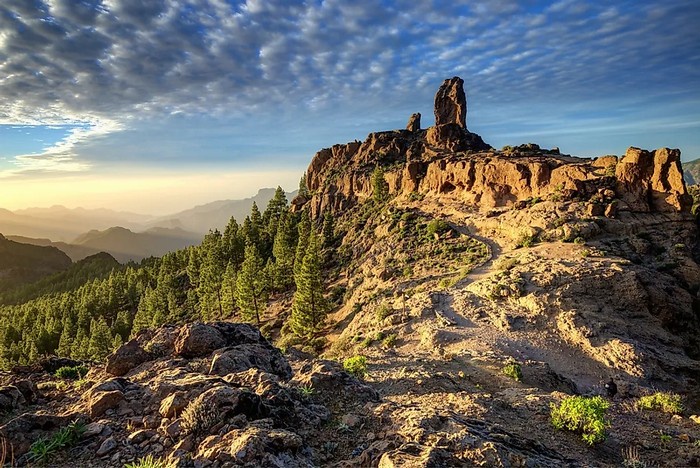Have you ever noticed that your neighborhood seems to have its own weather personality, distinct from nearby areas? Welcome to the fascinating world of microclimates, where subtle geographical features and human activities can create unique weather patterns https://climatempo.com/ In this article, we'll delve into the reasons behind the existence of microclimates and why your neighborhood might boast its very own atmospheric quirks.
Understanding Microclimates: Weather on a Smaller Scale
Defining Microclimates
Microclimates refer to small-scale climate variations that occur within a relatively confined area. While the overarching climate of a region is determined by its latitude, altitude, and proximity to bodies of water, microclimates zoom in on localized factors influencing weather conditions. These factors can range from vegetation and terrain to human-made structures.
The Influence of Urbanization
Urban areas often exhibit distinct microclimates due to the "urban heat island" effect. Buildings, asphalt, and concrete absorb and re-radiate heat, leading to higher temperatures within the city compared to the surrounding rural areas. Your neighborhood might experience warmer temperatures, especially during the night, as a result of this phenomenon.
Topographical Factors: The Lay of the Land Matters
Valleys, Hills, and Slopes
The topography of your neighborhood plays a crucial role in shaping its microclimate. Valleys tend to trap cold air, creating cooler pockets, while hills and slopes can impact wind patterns and sun exposure. If your home is nestled in a valley, you might experience cooler temperatures, even on a hot day, due to the natural insulation provided by the surrounding terrain.
Proximity to Water Bodies
If your neighborhood is situated near a lake, river, or ocean, you're likely to witness a distinct microclimate influenced by the water body. Bodies of water have a moderating effect on temperature, leading to milder conditions compared to inland areas. Coastal neighborhoods, for example, may experience less temperature variation throughout the day.
Vegetation and Green Spaces: Nature's Influence
Urban Greenery and Parks
The presence of green spaces, parks, and urban vegetation contributes significantly to microclimates. Trees provide shade, reducing surface temperatures and creating cooler areas. If your neighborhood boasts ample greenery, you may notice a more comfortable and temperate climate, especially during the warmer months.
Concrete Jungles vs. Green Oases
Conversely, neighborhoods dominated by concrete and minimal greenery may experience the "heat island" effect more intensely. Lack of vegetation leads to less shade and increased heat retention, resulting in higher temperatures. Understanding the balance between built environments and green spaces helps unravel the microclimate dynamics in your neighborhood.
Human Activities: A Local Climate Impact
Industrial and Commercial Zones
Certain human activities can contribute to localized climate variations. Industrial and commercial zones emit heat, pollutants, and alter land use, impacting the microclimate of nearby neighborhoods. If your neighborhood is close to such zones, you may experience higher temperatures and altered air quality.
Residential Architecture and Microclimates
The design and layout of residential areas also influence microclimates. Compact neighborhoods with closely spaced buildings may create wind tunnels, affecting air circulation. Additionally, the materials used in construction, such as asphalt or reflective surfaces, can impact temperature and sunlight absorption, further shaping the local climate.
Microclimates and Daily Life: Practical Implications
Gardening and Plant Selection
Understanding the microclimate of your neighborhood is invaluable, especially if you enjoy gardening. Plant selection and garden design can be optimized based on the specific conditions of your microclimate. Knowing whether your area gets more or less sunlight, experiences temperature extremes, or has specific wind patterns allows for smarter and more successful gardening.
Energy Efficiency in Homes
For homeowners, awareness of the microclimate can inform decisions on energy efficiency. Microclimates affect how sunlight interacts with your home, impacting heating and cooling needs. Strategic landscaping, window placement, and insulation adjustments can enhance energy efficiency based on the unique weather patterns of your neighborhood.
Conclusion: Embracing the Weather Tapestry of Your Neighborhood
Microclimates add layers of complexity to the tapestry of weather, creating a unique atmospheric signature for each neighborhood. Understanding the factors that contribute to your local microclimate empowers you to adapt and thrive in the weather peculiarities of your area. Whether it's choosing the right plants for your garden or optimizing your home for energy efficiency, embracing the microclimate lets you make the most of the distinctive weather patterns that make your neighborhood truly one-of-a-kind.


No comments yet